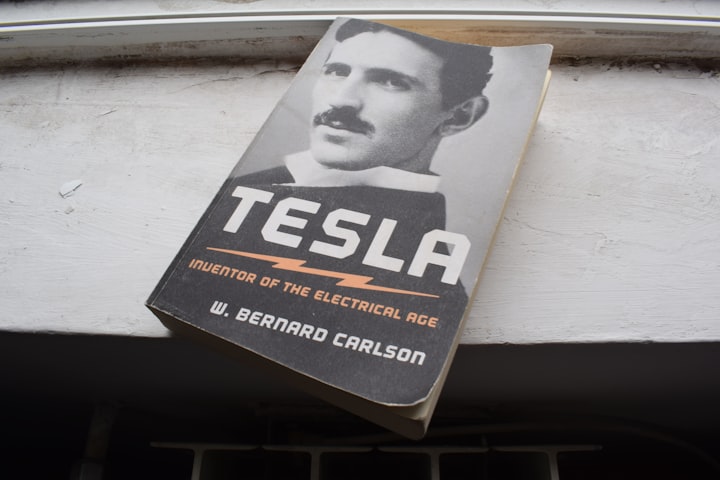
Born July 9/10, 1856, Smiljan, Austrian Empire [now in Croatia] – died January 7, 1943, New York, New York, USA), Serbian American inventor and engineer who discovered and patented the rotating magnetic field, the basis of most AC machines. He also developed the three-phase electrical power transmission system. He immigrated to the United States in 1884 and sold the patent rights to his system of AC dynamos, transformers, and motors to George Westinghouse. In 1891 he invented the Tesla coil, an induction coil widely used in radio technology.
Tesla was from a family of Serbian origin. His father was an Orthodox priest; his mother was uneducated but very intelligent. As it matures, it shows remarkable imagination and creativity as well as a poetic touch.
Training for a career as an engineer, he attended the Technical University of Graz, Austria, and the University of Prague. In Graz he first saw the Gramme dynamo, which worked like a generator and, when reversed, became an electric motor, and he devised a way to use alternating current to advantage. Later, in Budapest, he visualized the principle of the rotating magnetic field and drew up plans for an induction motor which was to become his first step towards the successful use of alternating current. In 1882 Tesla went to work in Paris for the Continental Edison Company, and while posted to Strasbourg in 1883 he built, after hours, his first induction motor. Tesla sailed for America in 1884, arriving in New York with four hundred in his pocket, some of his own poems, and calculations for a flying machine. He first found employment with Thomas Edison, but the two inventors were far apart in background and methods, and their separation was inevitable.
In May 1888 George Westinghouse, manager of the Westinghouse Electric Company in Pittsburgh, purchased the patent rights to Tesla's polyphase system of alternating-current dynamos, transformers, and motors. The deal precipitated a titanic power struggle between Edison's DC systems and the Tesla-Westinghouse AC approach, which ultimately won.
Tesla quickly created his own laboratory, where his inventive spirit was given free rein. He experimented with shadowgraphs similar to those that were later to be used by Wilhelm Röntgen when he discovered X-rays in 1895. Tesla's countless experiments included work on a carbon button lamp, the power of electrical resonance, and on various types of lighting.
In order to allay fears of alternating currents, Tesla gave exhibits in his laboratory in which he lit lamps by allowing electricity to flow through his body. He was often invited to give lectures in his country and abroad. The Tesla coil, which he invented in 1891, is widely used today in radio and television sets and other electronic equipment. That year also marked the date of Tesla's US citizenship.
Westinghouse used Tesla's alternating current system to light the World's Columbian Exposition in Chicago in 1893. This success was a factor in winning the contract to install the first electrical machinery in Niagara Falls, which bore the name and Tesla patent numbers. The project brought electricity to Buffalo in 1896.
In 1898, Tesla announced his invention of a teleautomatic boat guided by remote control. When skepticism was expressed, Tesla proved his claims before a crowd in Madison Square Garden.
In Colorado Springs, Colorado, where he stayed from May 1899 until early 1900, Tesla made what he considered his most important discovery: terrestrial standing waves. With this discovery, he proved that the Earth could be used as a conductor and caused to resonate at a certain electrical frequency. He also lit 200 cordless lights from a distance of 40 km (25 miles) and created artificial lightning, producing lightning bolts measuring 41 meters (135 ft). At one point, he was certain he received signals from another planet in his Colorado lab, a claim that has been met with derision in some scientific journals.
Returning to New York in 1900, Tesla began construction on Long Island of a $150,000 wireless world broadcast tower from American financier J. Pierpont Morgan. Tesla claimed to have secured the loan by assigning 51% of its telephony and telegraphy patent rights to Morgan. It expected to provide global communication and provide facilities for sending pictures, messages, weather warnings and stock reports. The project was scrapped due to a financial panic, labor issues, and Morgan's withdrawal of support. This was Tesla's greatest defeat.
After Tesla's death, the Custodian of Foreign Assets seized his trunks, which contained his papers, degrees and other honors, letters, and lab notes. These were eventually inherited by Tesla's nephew Sava Kosanovich and later housed in the Nikola Tesla Museum in Belgrade. Hundreds of people flocked to New York's Cathedral of St. John the Divine for his funeral, and a flood of messages acknowledged the loss of a great genius. Three Nobel laureates paid their respects to "one of the world's most remarkable intellectuals who paved the way for many technological developments of modern times".





Comments
There are no comments for this story
Be the first to respond and start the conversation.